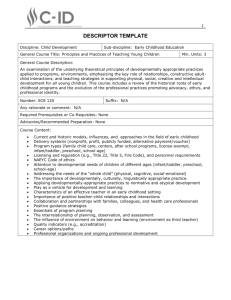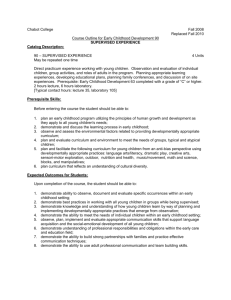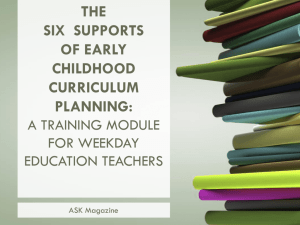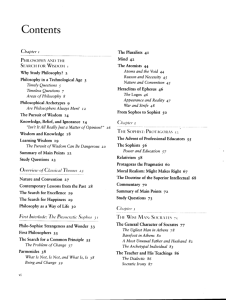ECE Program Observation Assignment: Early Childhood Education
advertisement
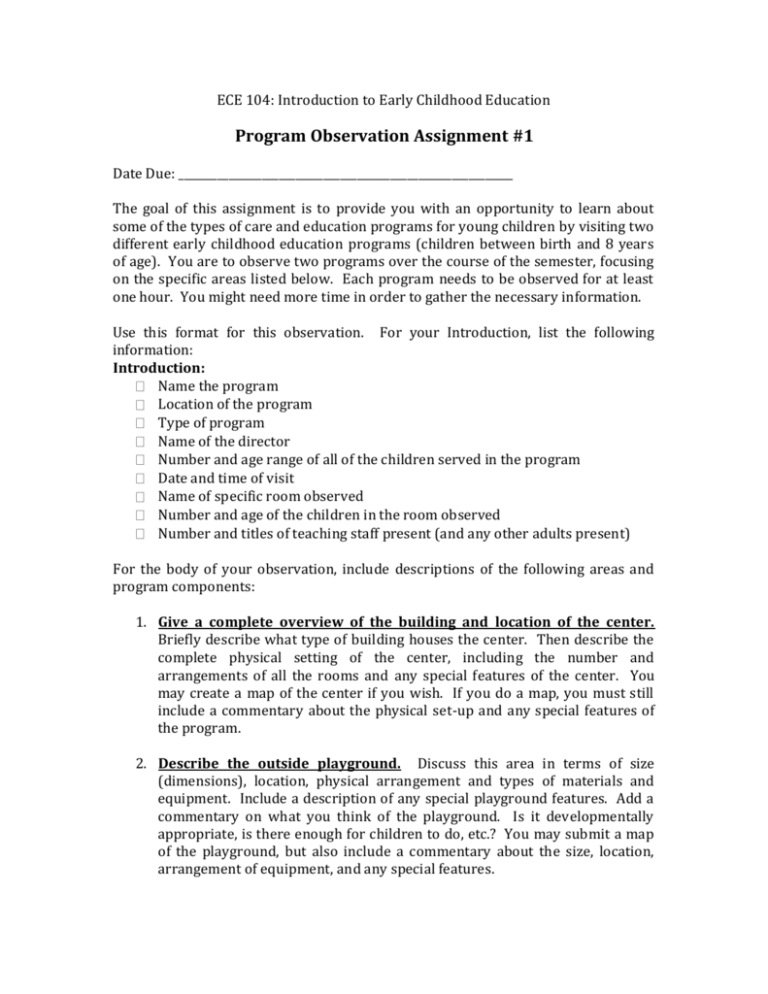
ECE 104: Introduction to Early Childhood Education Program Observation Assignment #1 Date Due: ____________________________________________________________ The goal of this assignment is to provide you with an opportunity to learn about some of the types of care and education programs for young children by visiting two different early childhood education programs (children between birth and 8 years of age). You are to observe two programs over the course of the semester, focusing on the specific areas listed below. Each program needs to be observed for at least one hour. You might need more time in order to gather the necessary information. Use this format for this observation. For your Introduction, list the following information: Introduction: Name the program Location of the program Type of program Name of the director Number and age range of all of the children served in the program Date and time of visit Name of specific room observed Number and age of the children in the room observed Number and titles of teaching staff present (and any other adults present) For the body of your observation, include descriptions of the following areas and program components: 1. Give a complete overview of the building and location of the center. Briefly describe what type of building houses the center. Then describe the complete physical setting of the center, including the number and arrangements of all the rooms and any special features of the center. You may create a map of the center if you wish. If you do a map, you must still include a commentary about the physical set-up and any special features of the program. 2. Describe the outside playground. Discuss this area in terms of size (dimensions), location, physical arrangement and types of materials and equipment. Include a description of any special playground features. Add a commentary on what you think of the playground. Is it developmentally appropriate, is there enough for children to do, etc.? You may submit a map of the playground, but also include a commentary about the size, location, arrangement of equipment, and any special features. 3. Describe the specific room observed. Include size (dimensions), arrangement, and types of learning areas (art or dramatic play, etc.), equipment, and materials. Offer a commentary about these features with regard to developmentally appropriate layout and use of the space in the early childhood classroom. You may submit a map of the classroom and still include a summary of all required information listed here in Number 3. 4. Describe the activities in progress during your visit. Request to see a copy of the room schedule if available and determine which “segment” you are observing. Clearly describe what children were doing and the kinds of materials and equipment they were using at the time. How were they using the materials? What were the teachers doing? How were they interacting with the children? Offer comments about the developmental appropriateness of the activities and equipment as well. 5. Describe the emotional climate of the room. (Form example, busy, bustling, quiet, tense, relaxed, loud) Consider children’s and adults’ body language and facial expressions as well as tone of voice. Write any dialog between children and adults that you might overhear that might clarify the emotional climate of the room. How did the children and adults relate to each other socially and emotionally? 6. Describe the goals and philosophy of the program (sometimes called the educational goals). Request a program brochure or other literature that has the program’s goals and/or philosophy. (You may also visit the program’s website, if needed.) Quote the philosophy or put it in your own words. Describe any evidence of the stated philosophy you see in the classroom (e.g. activities; schedule, materials; teacher-child relationships; child-child relationships). 7. Describe how parents participate in the program. You may obtain some of this information from printed information, but you might have to ask the teacher or other staff. Also look at bulletin boards for evidence of family participation (parent meetings, field trips, etc.) Note any evidence of parent participation in the center or classroom during your visit. 8. Explain your overall impression of the center and the specific classroom you observed. Include description of what you think are the program’s strengths and challenges. Include how you might improve the challenges/weaknesses. Consider whether you would enjoy working here or if you would enroll your child in this program. Program Observation Guidelines A. Choose your centers carefully. Use the list of NAEYC Accredited center as your guide. B. Call the center well ahead of time to schedule a visit and tell the director the purpose of your visit. You might need to call more than once. C. Dress professionally and be prompt. Remember to give your letter of introduction to the director. D. Be inconspicuous during your visit and move around the room quietly as you observe all areas. E. If you are unable to obtain all required information through observing, ask the teacher or director if they have time to answer a few questions. If they don’t have time while you are there, ask if there is a time to call them and ask a few questions. F. Observe two different types of programs from the following list: Infant-toddler full day program Preschool full-day program (children 3-5 years of age) Preschool part-day program (sometimes called a nursery school) Montessori Program; Head Start Program; Before and/or After School Program (sometimes call School-Age Program) G. Do not observe where you work or where you have been previously employed; or a program affiliated with a high school, or your child’s school, or a center where you have previously visited. Also not, if you do one program observation at one of Oakton’s early childhood programs, you need to do the other assignment at a totally different early childhood program. This program observation assignment is worth 80 points. Points will be earned for the following criteria: Neatness/appearance Writing level/organization Understanding or material/application of course content Adherence of assignment directions This paper will be form 6-10 pages, typed, and double-spaced. The use of clear, descriptive objective language is critical. Examples are expected. As stated in the syllabus, late papers will only be accepted one (1) class session past the due date and will be marked down a full letter trade. Please speak to me if you have any questions or concerns about this assignment.



